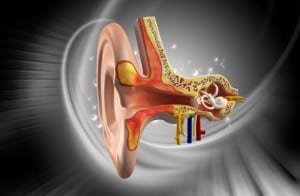The New Vestibular Rehabilitation Approach
Two Different Approaches to Vestibular Rehabilitation Therapy (VRT)
There is a great difference between conventional vestibular disorder treatment and modern neurological brain based vestibular rehabilitation practices. This difference is in the discussion below, as well as in my blog post about the two different approaches.
The two approaches: Conventional vs. Brain-Based
Conventional vestibular rehabilitation: Most conventional vestibular rehabilitation is performed by a physical therapist or audiologist. Consequently, these clinicians learn that 80% of all balance problems result from the malfunctioning of ear balance mechanisms. Crystals in the ear cause balance problems in the patient (Benign Paroxysmal Positional Vertigo or BPPV). Furthermore, standard therapies are to reset the crystals in the ear. Later, a series of vestibular exercises are given for the patient to perform. This is old school thinking.

Neurological brain-based vestibular disorder treatment
This has a more contemporary and neuroscientific approach to vertigo, dizziness and balance issues. Further, the neuroscience communities have known for at least the past ten years that 80% or more of balance issues start in the brain. For example, the Grey’s Anatomy text states “the brain or central nervous system controls and coordinates all the Systems of the body.” Also, this includes the vestibular system.
Primarily, there are three major areas of the brain that contribute to the balance in humans:
- The frontal cortex (neuroprocessor)
- The cerebellum (neurocalibrator)
- The central vestibular nucleus (neurointegrator) in the brain stem
These all control and synchronize a person having perfect balance, gait and coordination. As a result, when not functioning properly, the brain can cause a varying degree of balance problems. The key to success in vestibular cases is the initial comprehensive brain-based functional neurological examination. Therefore, you must find out what areas in the brain are not working or synchronized. This can give the patient long-term and lasting relief – new school thinking.
Vestibular System & Treatment
The vestibular system includes the parts of the inner ear and the brain that help control balance and eye movements. For instance, if the system is damaged by disease, aging or injury, vestibular disorders can result. Consequently, symptoms may include vertigo, dizziness and imbalance among others.

The type and severity of vestibular disorder symptoms can vary considerably. As a result, symptoms can be frightening and difficult to describe. People affected by vestibular disorders may even be perceived as inattentive, lazy, overly anxious, or seeking attention. Therefore, they may have trouble reading or doing simple math. For example, functioning at work, going to school, performing a routine task, or just getting out of bed may be difficult.
Keep in mind, it is important to get a proper diagnosis and possibly begin vestibular disorder treatment. After all, identifying the source is very beneficial.
The following is a list of symptoms that have been reported by people with vestibular disorders. However, not all symptoms will be experienced by every person, and other symptoms are possible. Additionally, an inner ear disorder may be present even in the absence of obvious or severe symptoms. Finally, it is important to note that most of these individual symptoms can also be a result of other unrelated neurological conditions.
Vestibular Disorder Symptoms
VERTIGO & DIZZINESS:
- spinning or whirling sensation
- an illusion of self or world moving (vertigo)
- lightheaded, floating or rocking sensation (dizziness)
- also, sensation of being heavy or pulled in one direction

BALANCE OR SPATIAL ORIENTATION:
- imbalance and stumbling
- difficulty walking straight or turning a corner
- clumsiness or difficulty with coordination
- difficulty maintaining straight posture
- tendency to look downward to confirm the location of ground
- head may be held in a tilted position
- tendency to touch or hold onto something when standing
- inclination to touch or hold the head while sitting
- sensitivity to changes in walking surfaces or footwear
- chronic muscle and joint pain (due to constantly balancing self)
VISION:
- trouble focusing or tracking objects with eyes
- objects or words on a page seem to jump, float, blur or may appear double
- sensitivity to different types of light
- increased night blindness
- difficulty walking in the dark
- as well as, poor depth perception
HEARING:
- hearing loss
- distorted or fluctuating hearing
- tinnitus (ringing, roaring, buzzing, or other noises in ear, as well as sensitivity to loud noises
- additionally, noises increase vertigo, dizziness, balance problems
COGNITIVE AND PSYCHOLOGICAL:
- difficulty paying attention
- forgetfulness
- short term memory lapses
- confusion
- difficulty comprehending or learning
- mental fatigue
- anxiety
- depression
- also: nausea, ear pain, headaches, slurred speech, or sensitive to weather
If you experience any of the symptoms above please contact our office to set up a proper diagnosis and discuss vestibular disorder treatment. Initially, a consultation can reveal if the brain is the cause of your vertigo, dizziness or balance issues. The examination must be very comprehensive and takes approximately 2 hours. Additionally, we welcome any questions you or a family member may have.